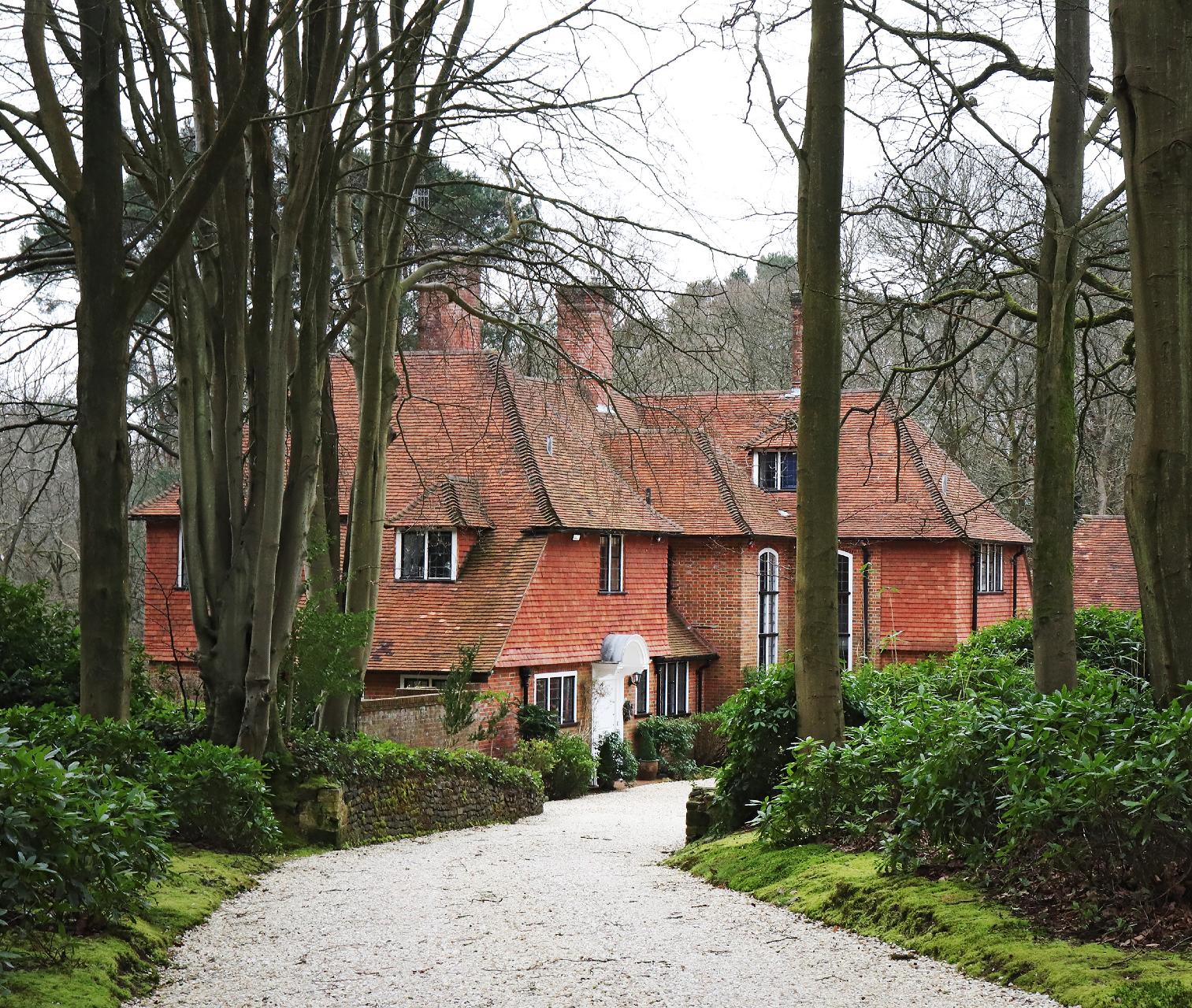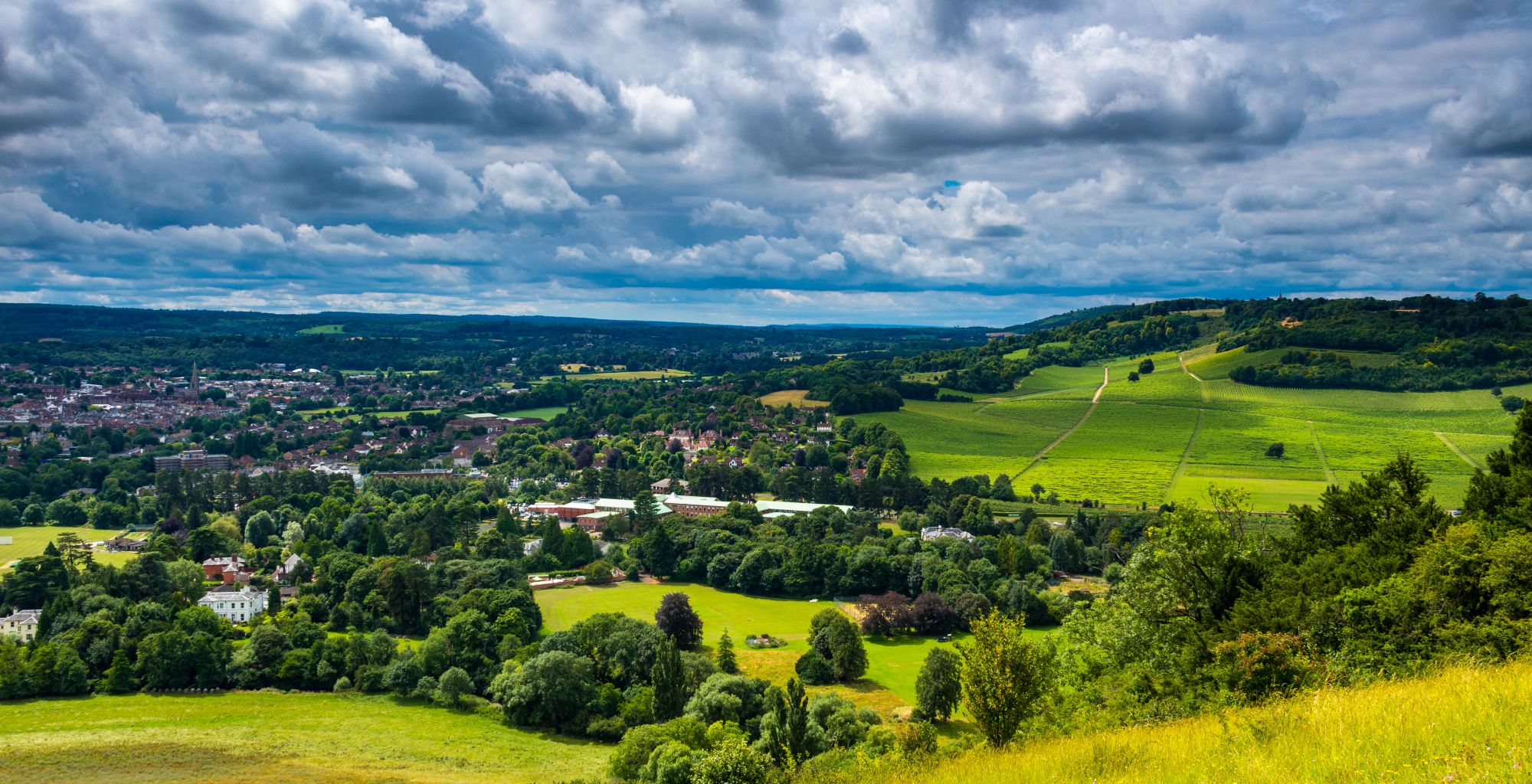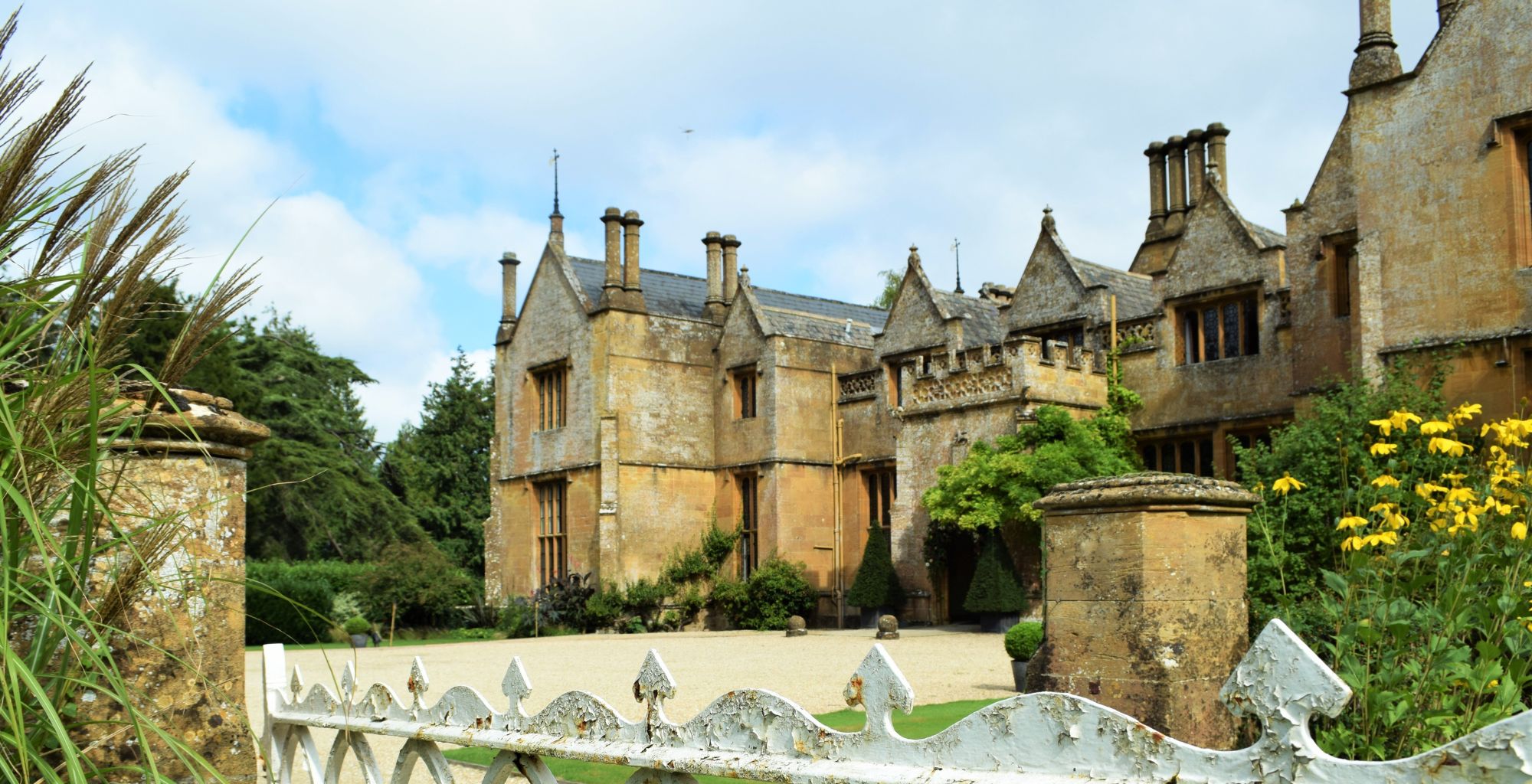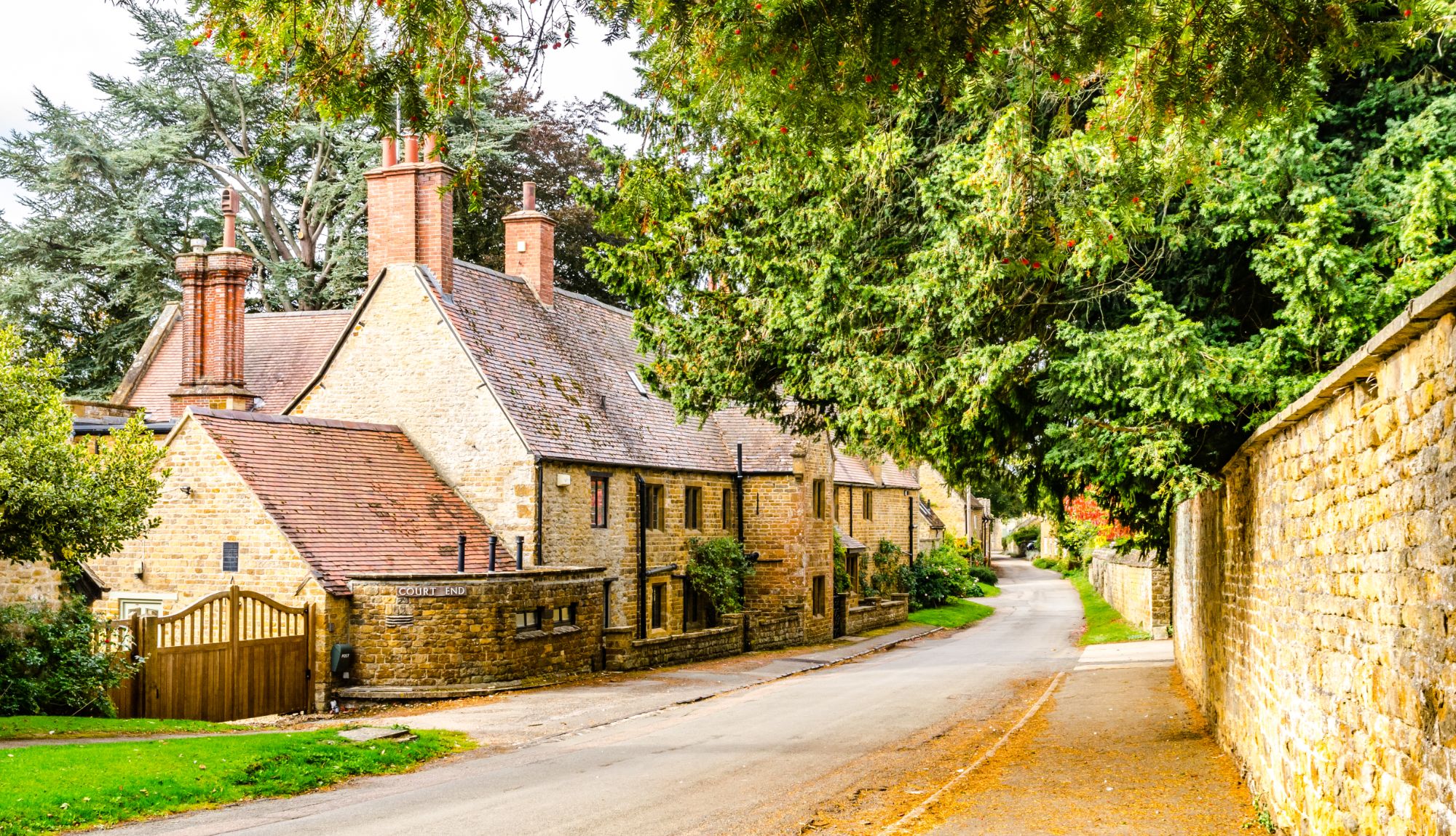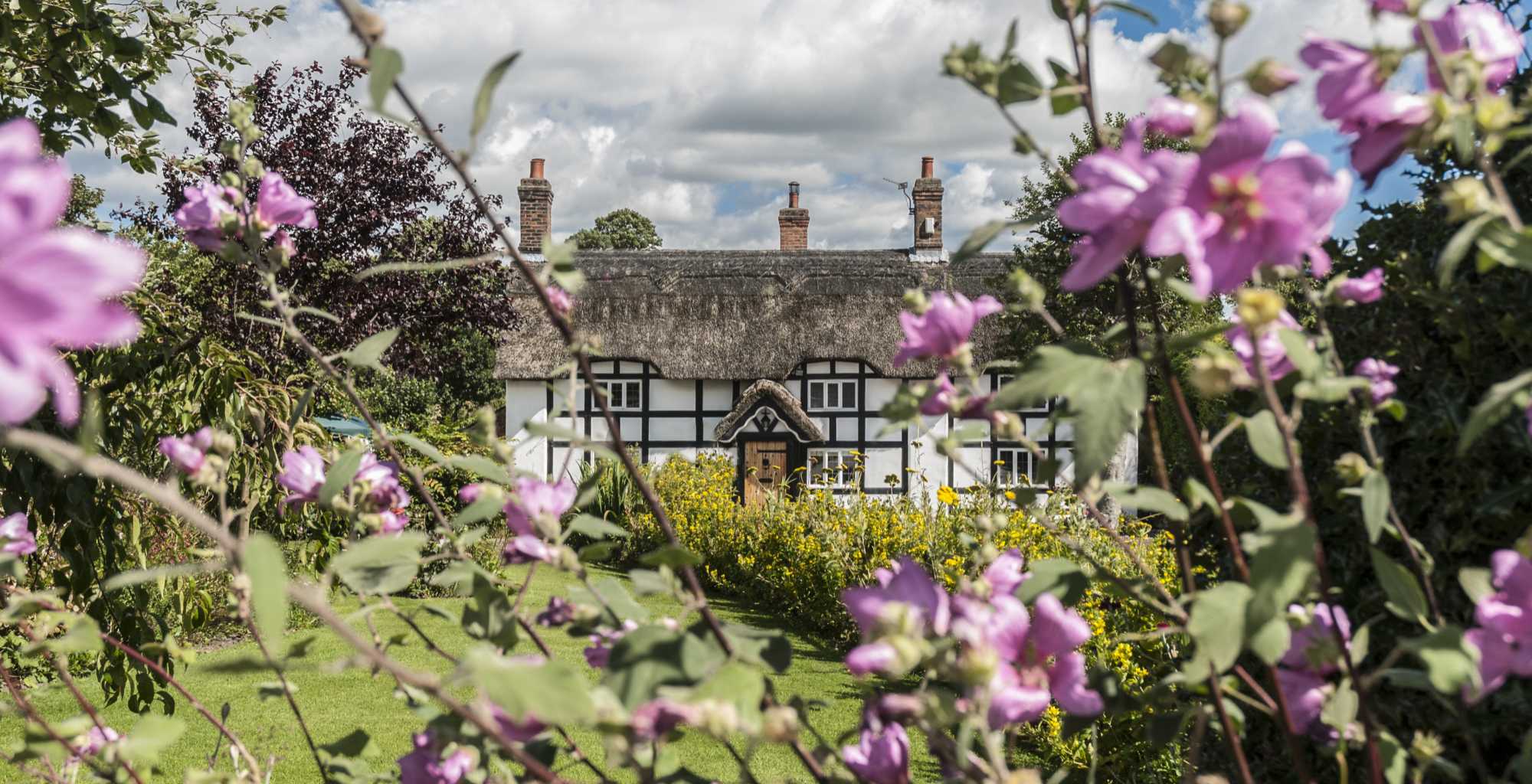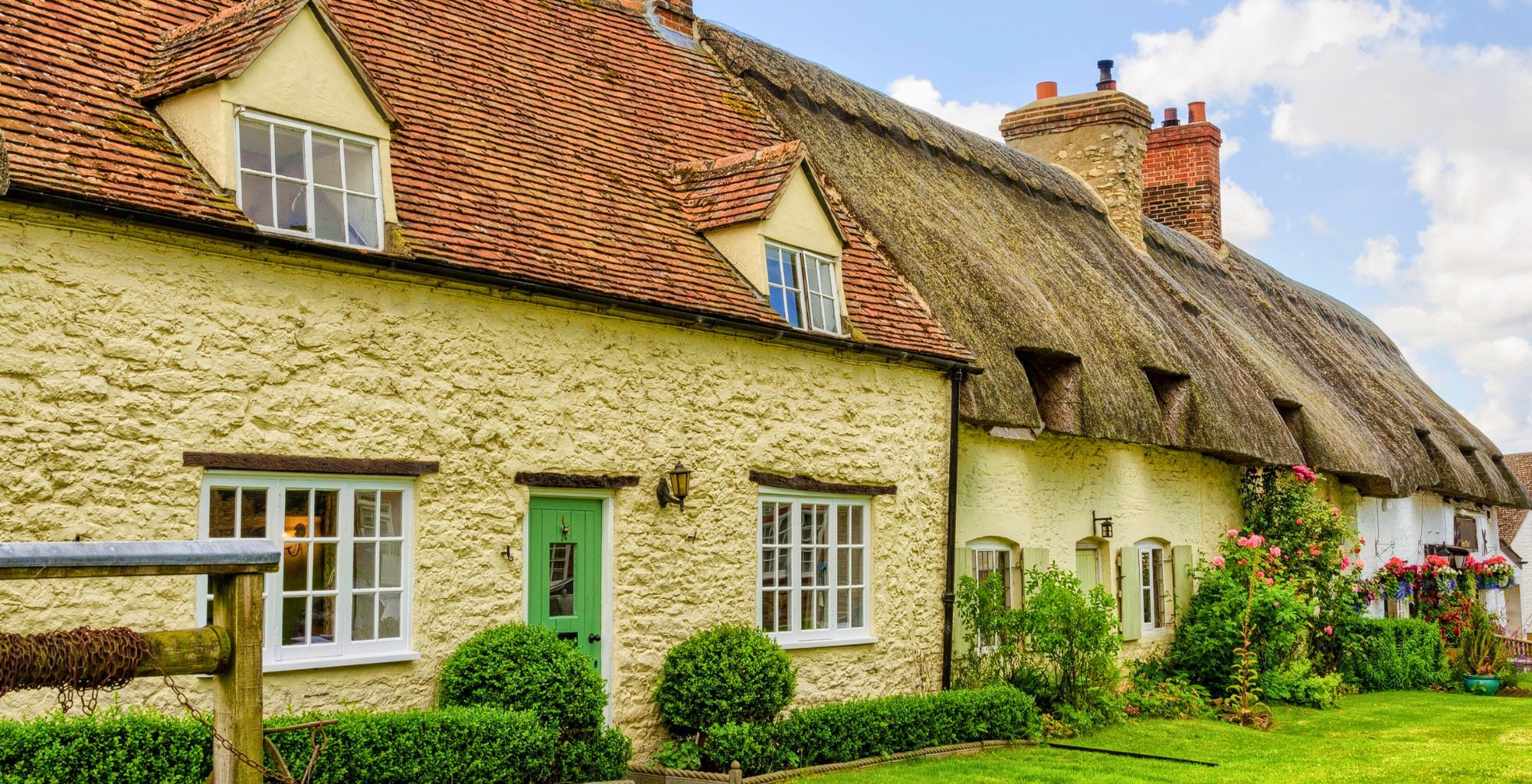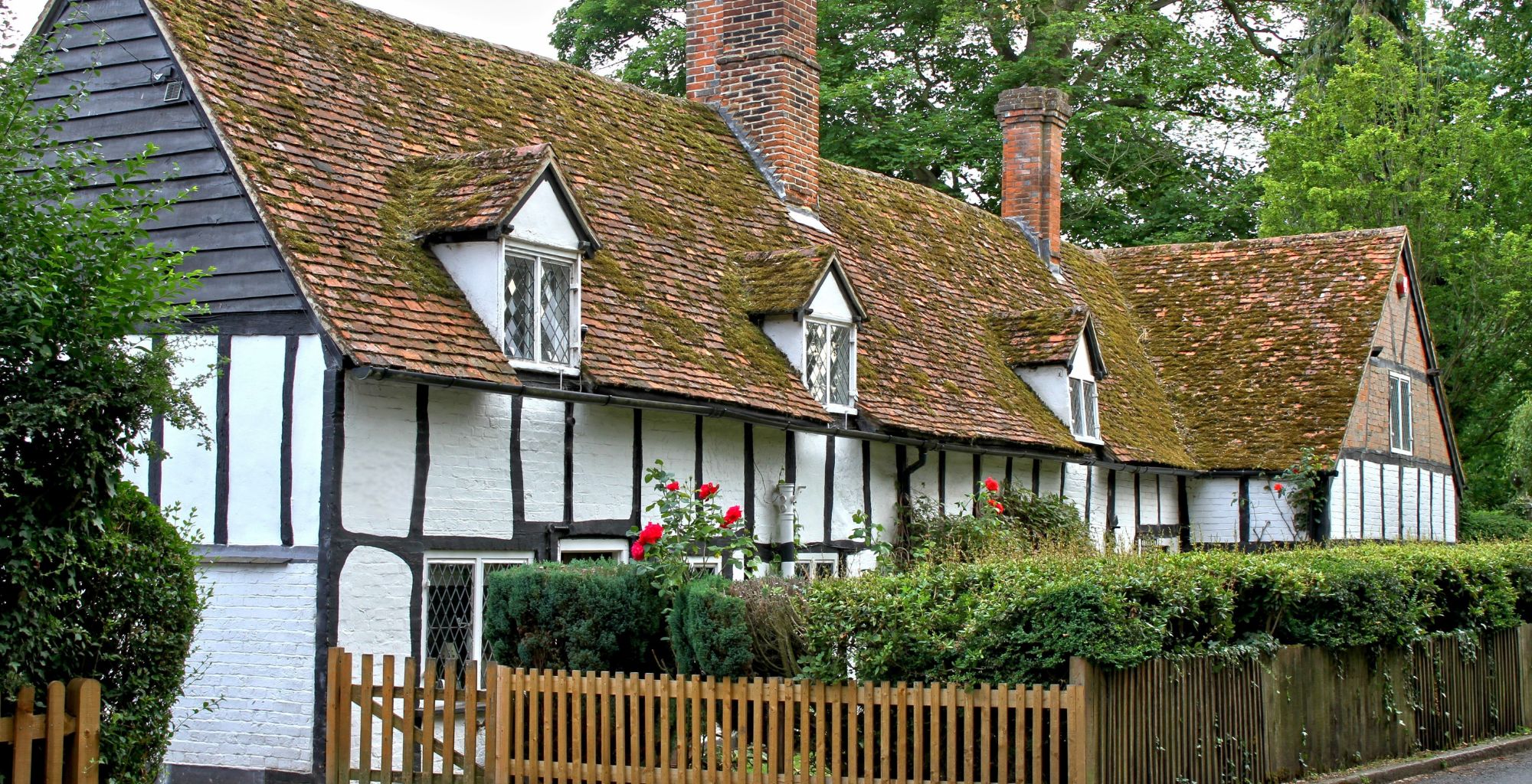Are you considering a move to the North West and want to know where the best places to live...
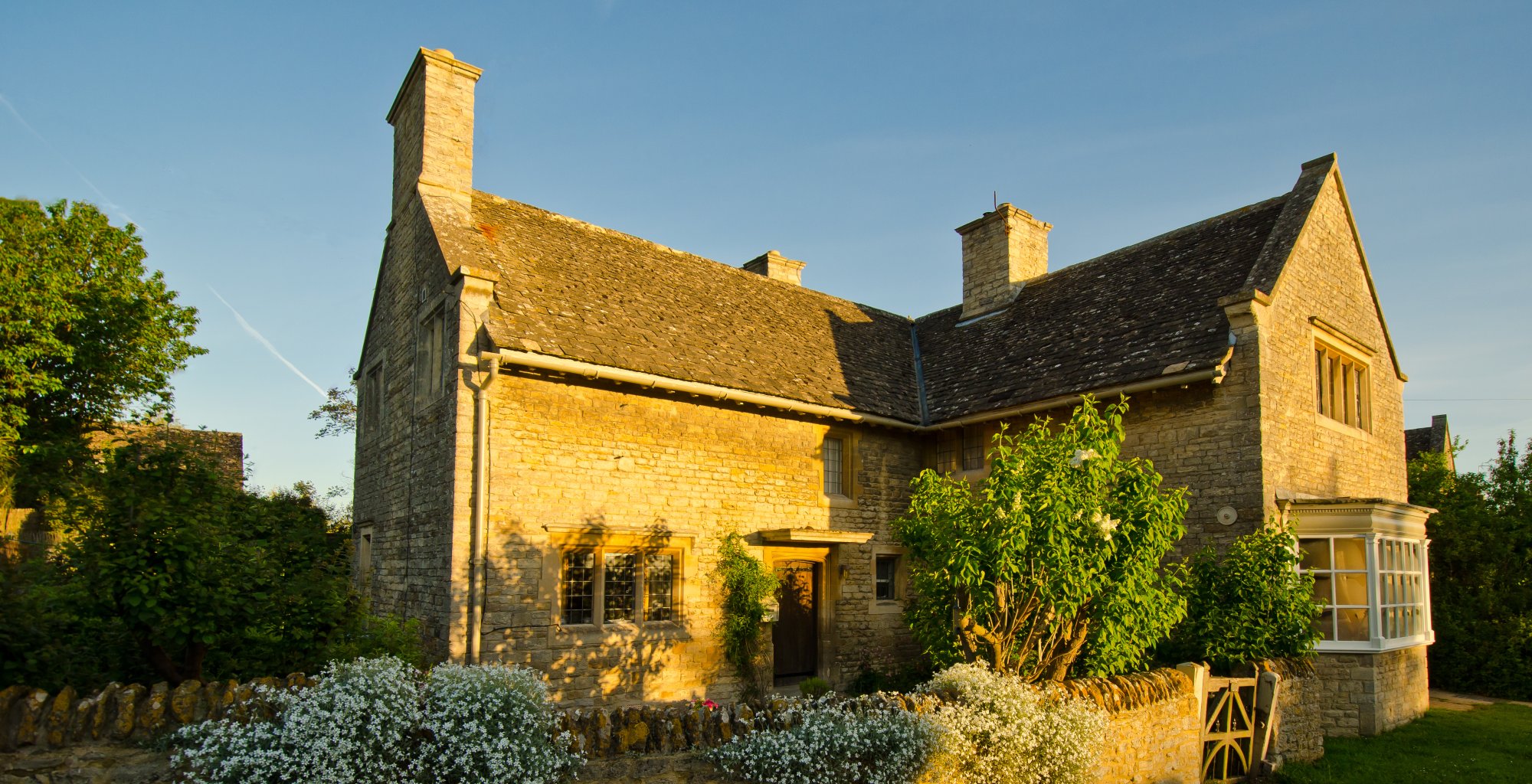
The 20 best places to live in the South East
In this blog we suggest the 20 best places to live in the South East of England.
England’s South East region offers a fantastic mix of country and coastal walks, cosmopolitan shopping areas, amazing castles and pretty villages – and most of them are less than two hours drive from the Capital.
1. Reigate, Surrey
Key facts:
- Schools in Reigate: There are a total of 38 public sector and private primary schools in the Reigate and Banstead catchment area. Of the former, St Joseph’s Catholic Primary School has been rated “outstanding” by Ofsted.
- Secondary schools: The area is especially well-served by quality secondary schools in both public and private sectors – in the former, St Bede’s School has been rated “outstanding”.
- Private schools: Among the fee-paying independents, Reigate Grammar School is especially well known, is academically selective, has a large Sixth Form, and a total of just 870 pupils;
- Transport links: the twin towns are ideally situated, one either side of London’s circular M25 motorway. There are effectively two main roads into London – the A23 (which runs south towards Brighton) and the A217.
- Trains: Fast trains from Reigate to London (Blackfriars and Victoria) take around 45 minutes.
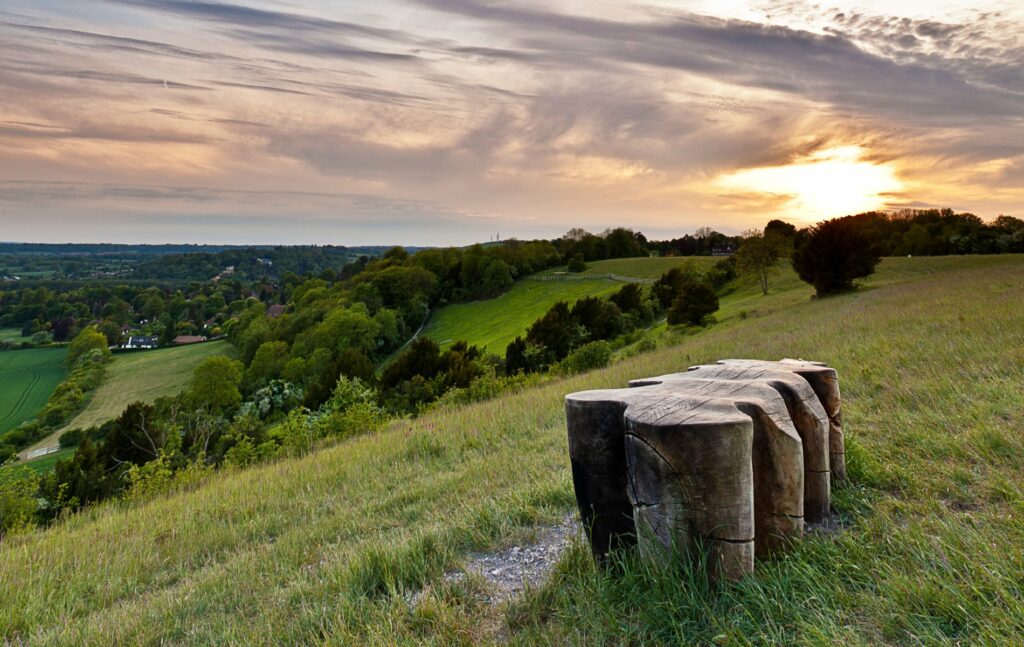
Is Reigate a good place to live?
The Borough of Reigate and Banstead covers quite a wide area astride the M25 motorway, and the twin towns are among the best known and longest-established of communities of the London commuter belt.
Reigate continues to attract professional workers, many of whom will have young to teenage children.
Although close to London, parts of the Borough offer good walking country, with commanding views over the North Downs.
2. Brighton, East Sussex
Key facts:
- Education: no fewer than four of the public sector primary schools are rated as “outstanding” by Ofsted, as is the independent Montessori Place (ages 1-16).
- Secondary schools: In the secondary sector, Vardean School and Dorothy Stringer School are both rated “good”.
- Private schools: Probably the leading private girls’ school in the UK, Roedean School, is on the eastern outskirts of Brighton.
- University: The University of Sussex is just to the north of the town, in the South Downs National Park;
- Transport links: The main trunk road, the A23 or London Road, runs directly north to the capital, crossing London’s circular M25 motorway at Pease Pottage, near the UK’s second-largest airport at Gatwick.
- Trains: Trains from Brighton go not just to Gatwick but several London termini (Victoria, London Bridge, and St Pancras), with fastest journey times to the capital of under an hour – and a staggering 653 trains a day.
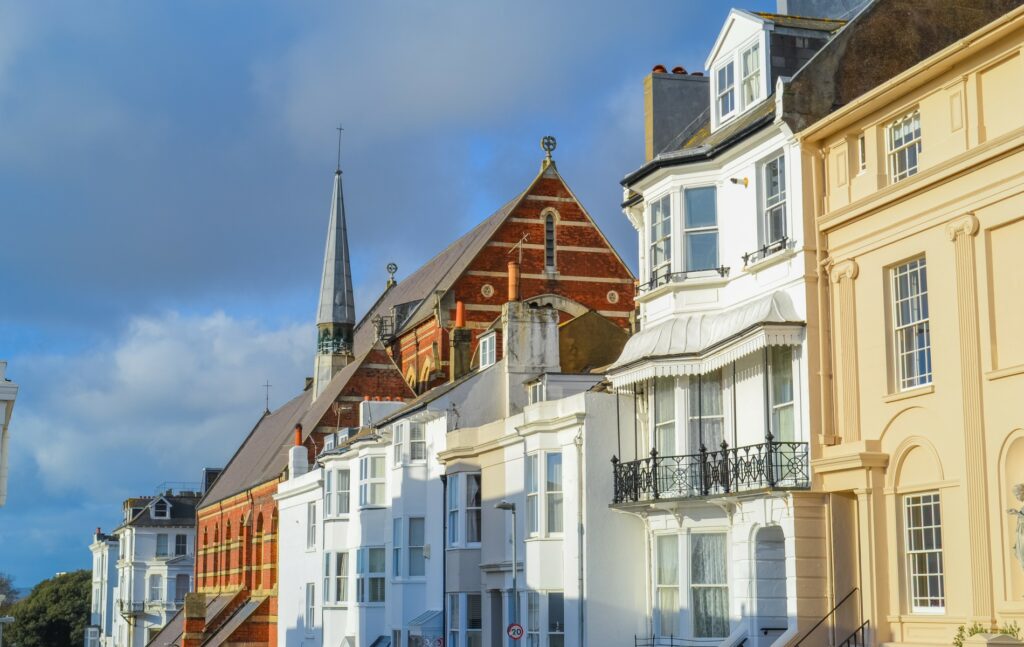
Why live in Brighton?
Brighton’s location on the sunny south coast of England, yet well within commuting distance of London, makes it popular with young professionals and families.
It has a diverse population, with students from the University of Sussex swelling the numbers significantly and giving the town an international, cosmopolitan vibe.
The beaches immediately surrounding the town are almost certain to be crowded during the summer months, when quieter outings and countryside walks can be found across the rolling South Downs.
3. Petersfield, Hampshire
Key facts:
- Education: the five state primary schools in the district are all rated “good” by Ofsted. The Petersfield School, the leading state-funded academy in the area, is rated “outstanding”.
- Private schools: One of the UK’s leading fee-paying (£37,000 per annum for boarders) schools for boys and girls up to the age of 18, Bedales School, is just outside the town;
- Transport links: Petersfield is bypassed by the main London to Portsmouth trunk road, the A3, which also connects to the M25 and to towns along the English south coast. The east-west A272 runs across the whole of this part of Hampshire and the neighbouring counties of West Sussex and East Sussex.
- Airports: Gatwick Airport is about an hour’s drive away and the regional Southampton Airport about 40 minutes.
- Trains: By train, Petersfield is just an hour from London (Waterloo) and about half an hour from Portsmouth.
Is Petersfield a nice place to live?
Petersfield is typical of the ancient market towns dotted across Hampshire and, in this particular case, made all the more attractive and picturesque thanks to its location within the South Downs National Park.
With its regular farmers’ markets and bustling streets lined with all manner of independent shops, cafes and restaurants, Petersfield gives every impression of a thriving community locked away in the depths of Hampshire.
Yet it is only an hour and half away from London – by car – making it a comfortable commute, with both regional and international airports at Gatwick and Southampton nearby.
4. Farnham, Surrey
Key facts:
- Education: six primary schools in Farnham and the neighbouring outskirts of Aldershot are rated “outstanding” by Ofsted. The local secondary school, All Hallows Catholic School, is also rated “outstanding”. The former Farnham Grammar School is now a sixth-form college, Farnham College.
- Private Schools: There are a number of independent schools in the district. Most notable is probably Frensham Heights, a co-educational day and boarding school of around 500 pupils up to the age of 18;
- Transport links: the main trunk road bypassing Farnham is the A31 which runs south to Winchester and north to Guildford. From the neighbouring town of Farnborough, you have direct access to the M3 motorway towards either London or the south coast. The 41-mile (66-km) drive to London is likely to take less than an hour.
- Trains: the frequent trains make the journey in one hour and eight minutes.
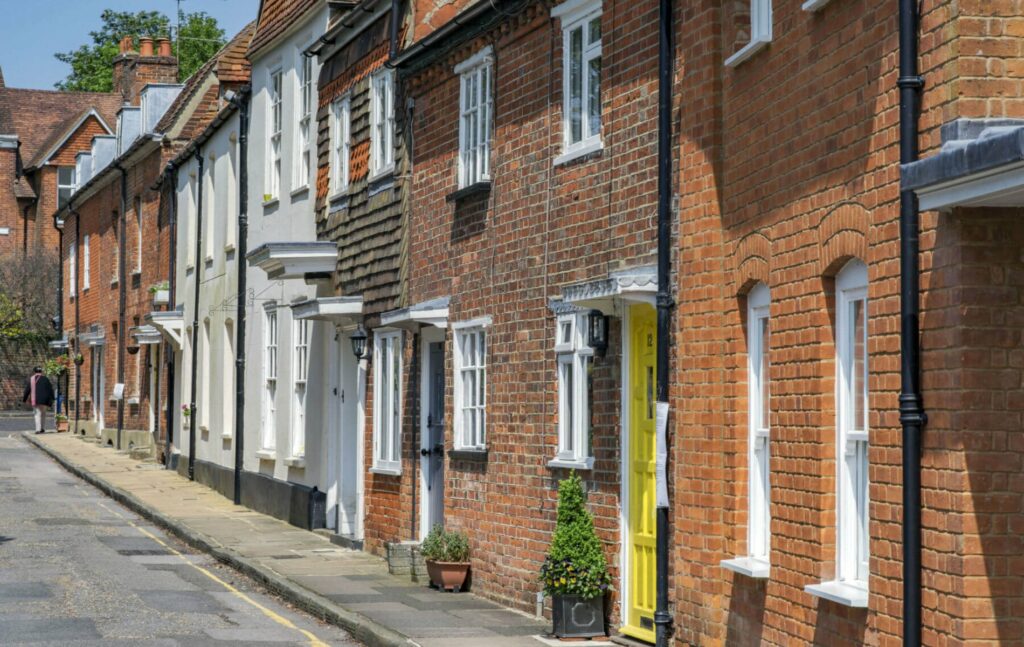
Is Farnham a nice place to live?
In March 2020, the Sunday Times rated Farnham one of the best places to live in the UK – citing its proximity to London, good schools, and the independent shops of the bustling market town on the Surrey-Hampshire borders.
In December of 2019, the town was also rated the happiest place in Surrey to live.
Historic Farnham Castle, the crafts centre and market at The Maltings, and the surrounding heathland are all attractive places to visit.
5. Cowes, Isle of Wight
Key facts:
- Education: five of the primary schools in Cowes are rated “good” by Ofsted, as is Cowes Enterprise College (formerly Cowes High School, but now an Ormiston Academy for pupils aged 11-19), one of nine state secondary schools across the island.
- Private schools: The independent Priory School (co-educational, ages 4-18) has a strong academic reputation, as does its neighbour Ryde School;
- Transport links: since it is an island, transport links are naturally a little more difficult – but a 25-minute Hi-Speed passenger ferry links Cowes to the port of Southampton and, after a free 10-minute bus transfer, to the mainline station and fast trains to London (total journey time two hours and 33 minutes). The journey by road (and ferry) takes practically the same time, with sailings via Portsmouth.

Why live in Cowes?
The twin towns of Cowes and East Cowes straddle the estuary of the River Medina on the north coast of the Isle of Wight, which lies just a mile or two off the southern coast of Hampshire.
The island was a favourite holiday home of Queen Victoria and Prince Albert and Cowes today remains internationally famous for its week-long annual sailing regatta – one of the world’s oldest.
6. Amersham, Buckinghamshire
Key facts:
- Education: in addition to the six primary schools rated by Ofsted as “good”, Chesham Bois Church of England School is rated as “outstanding”. Two state secondary schools are also rated “outstanding” – Dr Challoner’s Grammar School (for boys) and its sister Dr Challoner’s High School (for girls).
- Transport links: Amersham is at the junction of a whole network of local trunk roads (A355, A404, A416, and A413), making it an important hub for this part of Buckinghamshire. It is only 25 miles (40 km) from central London – about a 35-minute drive. What makes Amersham truly accessible to the capital, is the fact that it is the terminus of the London Underground’s Metropolitan Line. It is less than 20 miles (32 km) by road to Heathrow Airport (a journey of around 24 minutes).
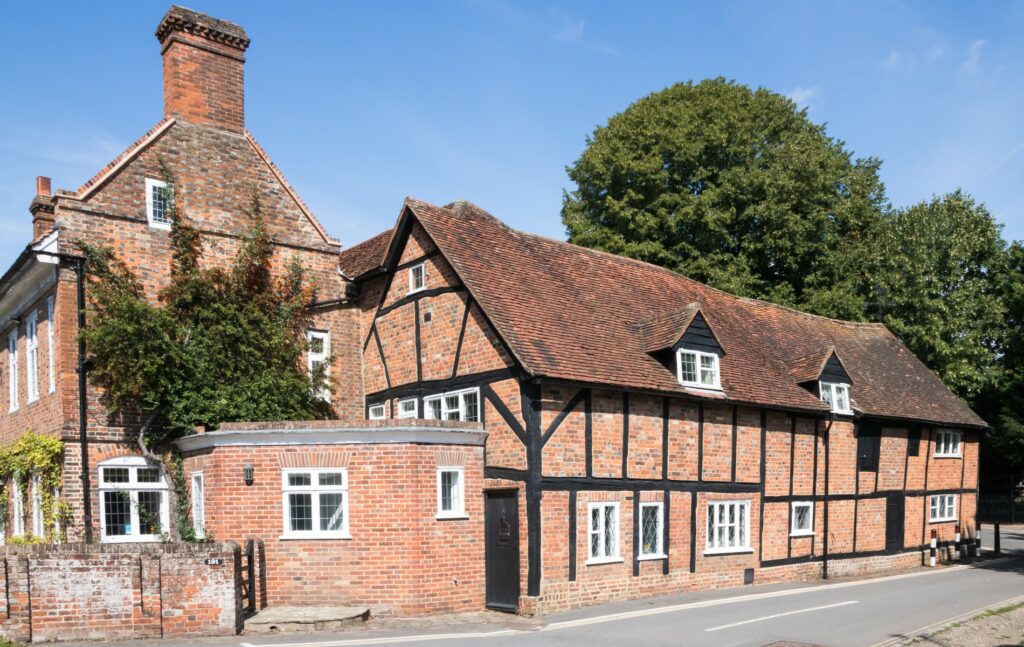
Is Amersham a nice place to live?
Amersham is one of London’s first commuter towns (thanks to the Metropolitan Line, which opened in 1892. It featured in a documentary by poet laureate John Betjeman in 1973 called Metro-land).
Old Amersham is an ancient, pre-Saxon town built on the valley floor of the River Misbourne. Amersham-on-the-Hill is the name given to the more modern development that was heralded by the arrival of the Metropolitan Line.
In March 2020, the Sunday Times described Amersham as one of the best places to live in the UK – thanks not only to its superlative transport links but the attractiveness of the town and its location in the beautiful Chiltern Hills.
7. Hurley, Berkshire
Key facts:
- Education: the nearest primary school, Danesfield School, is rated “outstanding” by Ofsted. Sir William Borlase’s Grammar School, in nearby Marlow, is also an “outstanding” state schools, says Ofsted.
- Private Schools: Some of the most prestigious independent schools in the country are located in Berkshire – and an article in Berkshire Life on the 25th of October 2019 listed 23 of them;
- Transport links: the northern boundary of the parish of Hurley is the River Thames. Indeed, the Thames Valley offers most of the road and rail routes in this part of the county. From the nearby A404(M), there is easy access to the M4 motorway and central London – some 32 miles (51.6 km) and around 42 minutes driving time.
- Train: Travelling by train to London involves a short (8 minute) drive or taxi ride to the station at Maidenhead and then a 35-minute train journey direct to London Paddington.
- Airport: Heathrow Airport is less than 20 miles (32 km) away – about 38 minutes by car.
Why live in Hurley?
Not only has this small, little known, village been voted one of the best places in which to live in the UK in 2020
It has also gained the moniker of “Gorgeous-on-Thames”, thanks to its Thames Valley setting, historic associations, and the surrounding natural environment.
8. Petworth, West Sussex
Key facts:
- Primary education: Petworth Church of England Primary School is rated “good” by Ofsted.
- Secondary schools: The closest secondary school is the co-educational, independent Seaford College founded in 1884. The school is a member of the prestigious Headmasters’ and Headmistresses’ Conference and is set in Lavington Park, which occupies 400 acres of the South Downs National Park;
- Transport links: Petworth lies somewhat off the beaten track, about 12 miles (21 km) northeast of the city of Chichester and the south coast of England. Nestled into the eastern folds of the South Downs, Petworth is nevertheless less than 50 miles (78 km) from London – approximately one hour and 13 minutes by car.
- Trains: The train journey to London involves a short car or taxi ride to the station at Pulborough (7 minutes) followed by direct services into London Victoria (a further one hour and 14 minutes).
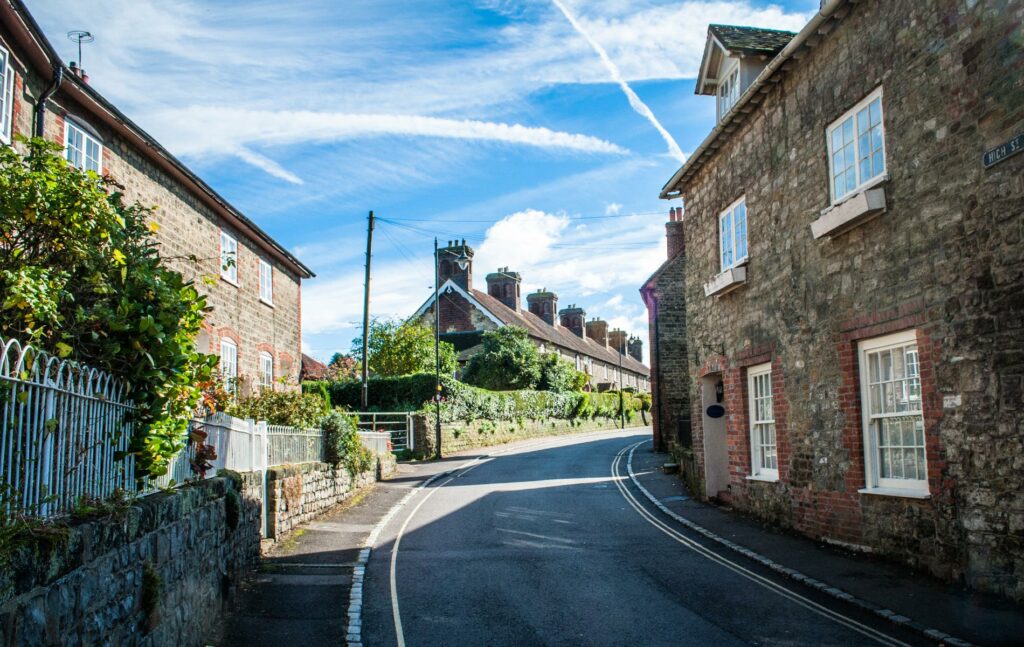
Is Petworth a nice place to live?
It’s a small town with a history illustrated by an abundance of historic houses – medieval, Georgian, and Victorian, and whitewashed or proudly naked in their brick or stone.
Recently voted one of the best places to live in the South East, Petworth maintains a surprising sense of bustle in its streets of independent shops, restaurants, galleries, and delis.
9. Cookham, Berkshire
Key facts:
- Education: Cookham Dean Church of England Primary School and Cookham Rise Primary School are both rated “good” by Ofsted. There is also a Montessori school in Cookham. Sir William Borlase’s Grammar School – just 5 miles (8 km) away – is an “outstanding” state school, says Ofsted.
- Private schools: In nearby Maidenhead, you will find the independent schools Claires Court (for boys and girls aged 3 to 18) and 24 miles (38 km) the prestigious St James Senior Boys’ School;
- Transport links: Cookham is in the Thames Valley, about midway between the motorways M40 and M4 (both of which offer fast routes by road into central London) – the distance is around 30 miles (48 km) and should take less than an hour (depending on traffic).
- Trains: The fastest direct rail service to London Paddington takes barely half an hour, but the remaining services require a change at Maidenhead and take around 50 minutes.
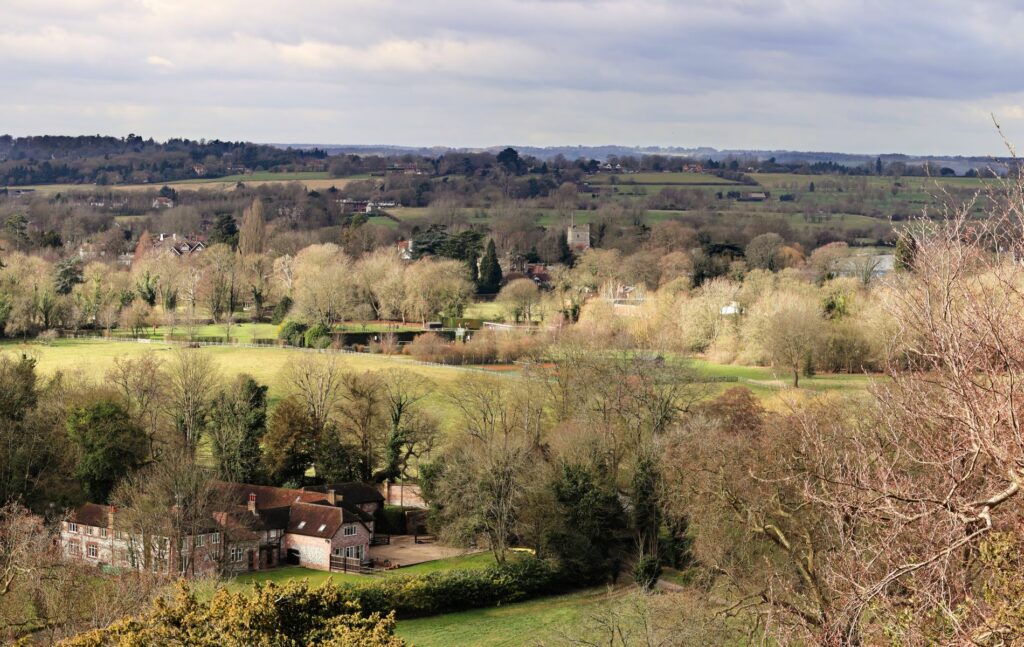
Is Cookham a good place to live?
Cookham is a place called home by celebrities, those leaving the city and is a popular place for families to reside.
The trio of settlements – Cookham village, Cookham Rise and Cookham Dean – that make up “the Cookhams” offer beautiful Thameside walks and a community spirit in which everyone seems to know everyone else.
10. High Wycombe, Buckinghamshire
Key facts:
- Education: of the nine primary schools in High Wycombe, Ofsted has rated two of them – Chepping View Primary Academy and The Downley School – as “outstanding”. John Hampden Grammar School and Wycombe High School (a girls grammar schools) are also rated “outstanding.
- Private school: Wycombe Abbey School is an independent school for girls (aged 11 to 18) founded in 1896 and has an impressive record of academic success;
- Transport links: High Wycombe is close to the M4 motorway, between junctions 3 and 4. This gives direct access by road to central London – some 29 miles (47 km) to the southeast – and to the university city of Oxford – a 23 miles (38 km) to the northwest.
- Trains: Chiltern Railways operates half-hourly services to London Marylebone – with the fastest trains taking just 27 minutes.
Why live in High Wycombe?
High Wycombe lies to the northwest of London in the Chiltern Hills and is home to Hughenden Manor, once the residence of Britain’s famous 19th-century statesman Benjamin Disraeli.
The Chilterns are perhaps the lesser-known rivals to the Cotswolds, so offer plenty of green space for walking, rambling and general recreation.
Thanks to recent regeneration and development of the town itself, High Wycombe has recently attracted young professionals and their families looking for less costly homes than those found in London.
The Eden Shopping Centre in High Wycombe is one of the UK’s biggest, covering 850,000 square feet and home to more than 100 retail outlets.
11. Chertsey, Surrey
Key facts:
- Education: of the 10 primary schools in the Chertsey catchment area, two are described as “outstanding” by Ofsted. The co-educational comprehensive Salesian School for boys and girls aged 11-18 has also been rated as “outstanding”.
- Private schools: There is also a leading independent school for 11 to 18 year-olds in the centre of Chertsey, Sir William Perkins’s School;
- Transport links: Chertsey remains an important bridging point over the River Thames (the first bridge was built there in the early 15th century). It continues to make the place an important transport hub for this area close to the west of London.
- Trains: There are around 35 trains a day into the centre of the capital (London Waterloo via Weybridge), taking just over one hour.
- By car, the road journey of approximately 25 miles (40 km) takes just over half an hour (depending on traffic). Chertsey is just over 6 miles (10 km) from Heathrow Airport.
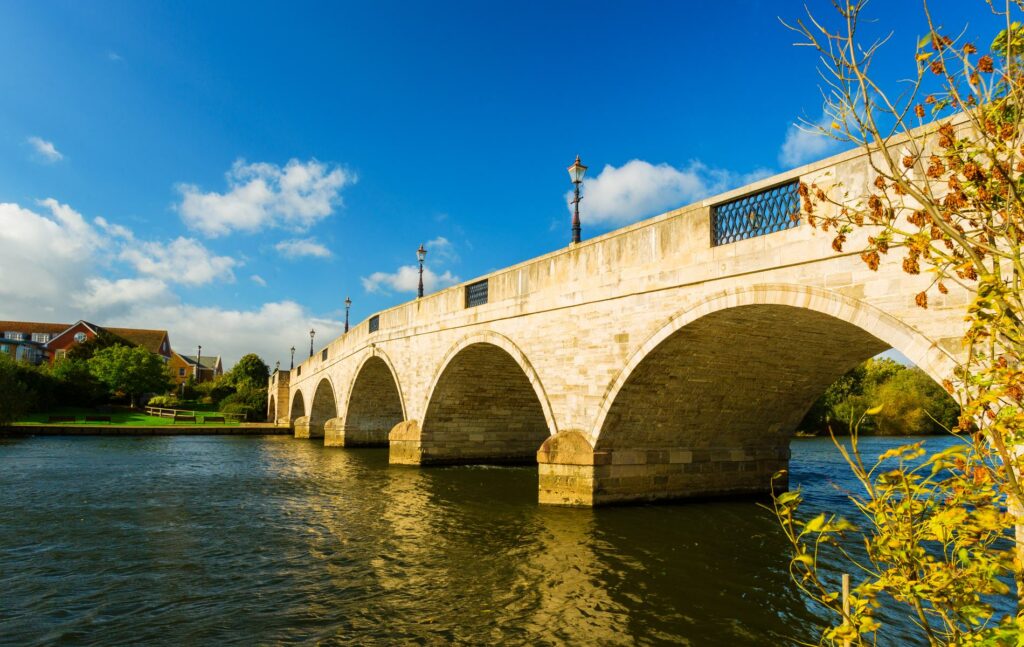
Is Chertsey a nice place to live?
Chertsey is ideally situated for a commute into London – for work or pleasure – yet remains a quiet and safe enough suburb to attract families with young children, who also appreciate the proximity of amenities for play and recreation.
12. Broadstairs, Kent
Key facts:
- Education: there are no fewer than 7 primary schools in the Broadstairs catchment area (which includes Ramsgate and Margate) rated as “outstanding” by Ofsted. The local grammar school – now an Academy for 11-18 year-olds – Dane Court Grammar School is also rated “outstanding”.
- Private schools: The independent, fee-paying St Lawrence College in nearby Ramsgate maintains high academic standards amongst a roll that includes many children of international families;
- Transport links: situated on the east coast of the county of Kent on the historic Isle of Thanet, Broadstairs is roughly mid-way – 20 miles (32 km) – between Dover and Canterbury. It is only 60 miles (97 km) from London’s circular M25 motorway. The drive into central London takes around an hour and a half.
- Trains: There are nearly 100 trains a day direct to London St Pancras and to London Victoria, with the fastest completing the journey in just one hour and 18 minutes.
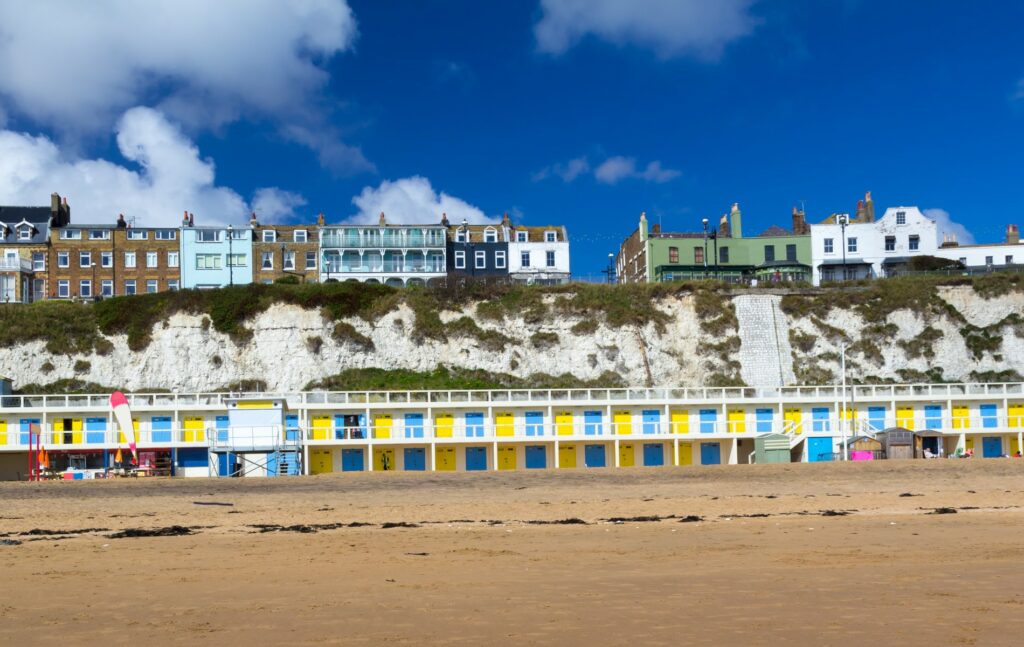
Why live in Broadstairs?
Conjure up in your mind the typical English seaside town – Broadstairs is likely to be it.
Once overshadowed by its brasher neighbours Ramsgate and Margate, Broadstairs has recently grown quietly confident in its leading role at the heart of the Isle of Thanet community.
Sandy beaches, a promenade by the sea, Broadstairs even has a Michelin-starred restaurant – called Stark.
And all this little more than a stone’s throw from central London.
13. Caversham, Berkshire
Key facts:
- Education: of the ten primary schools in Caversham and the closest part of nearby Reading, three of which are rated “outstanding” by Ofsted. Three secondary schools (academies) on the outskirts of Reading are also rated “outstanding”.
- Private school: In Caversham itself, Queen Anne’s School is a small, (450 pupils) independent boarding and day school for girls aged 11 to 18;
- Transport links: Caversham lies on the north bank of the River Thames, opposite its much larger neighbour, the city of Reading. Both are served by the major M4 motorway, which runs eastwards directly into London and westwards towards Bristol and South Wales. It takes approximately one hour to drive the 40 miles (66 km) into central London.
- Trains: Train times from nearby Reading Station (just 5 minutes away) are fast – 21 minutes, with more than 300 departures a day.
Is Caversham a good place to live?
Described in March 2020 as the Berkshire village that everyone wants to move to, Caversham has also been voted one of the best places to live in the UK.
Given its fast and reliable rail services into the heart of London (after a short walk into the station at Reading), Caversham rates as a higher-end suburb of the capital, but one that has preserved acres of green space with attractive walks along the banks of the Thames and yet more open countryside in the Chiltern Hills to the north.
14. Eynsford, Kent
Key facts:
- Education: all six of the primary schools in Eynsford’s catchment area of Crockenhill, Horton Kirby, and Swanley are rated “good” by Ofsted. Orchards Academy for 11-18 year-olds in Swanley is also rated “good”. Six miles away in Orpington, the selective St Olave’s and St Saviour’s Grammar School has been rated “outstanding” by Ofsted.
- Transport links: Eynsford is close to the intersection of London’s circular M25 motorway and the M20 (to Folkestone and Dover on Kent’s south coast). Road connections are, therefore, excellent. The 20-mile (33 km) drive into central London takes little over half an hour.
- Trains: Direct train services to London – Victoria, Blackfriars, and Charing Cross take less than one hour.

Why live in Eynsford?
The picturesque village of Eynsford has been voted one of the best places in Kent to live – thanks to its proximity to London and for the quiet, safe, and green environment in which it is situated.
15. Goudhurst, Kent
Key facts:
- Education: the local primary school, Goudhurst and Kilndown Church of England Primary School is rated “outstanding” by Ofsted. Tonbridge Grammar School For Girls – a state grammar school in nearby Tonbridge, 12 miles (19 km) away – is also rated “outstanding” by Ofsted. It is also one of the top-performing state schools in the UK to award the International Baccalaureate.
- Nearby private school: The renowned leading independent school for girls, Benenden, is also a short distance away;
- Transport links: Goudhurst is close to the A21 trunk road, which joins London’s circular M25 motorway some 21 miles (34 km) to the north at Sevenoaks. To the south, the A21 runs to the historic coastal town (and battle site) of Hastings. The 47-mile (76 km) drive into central London is likely to take just over an hour.
- Trains: The most convenient station for train services to London (London Bridge) is about 20 minutes away in Tunbridge Wells, where an average of 76 trains a day cover the journey in less than an hour.
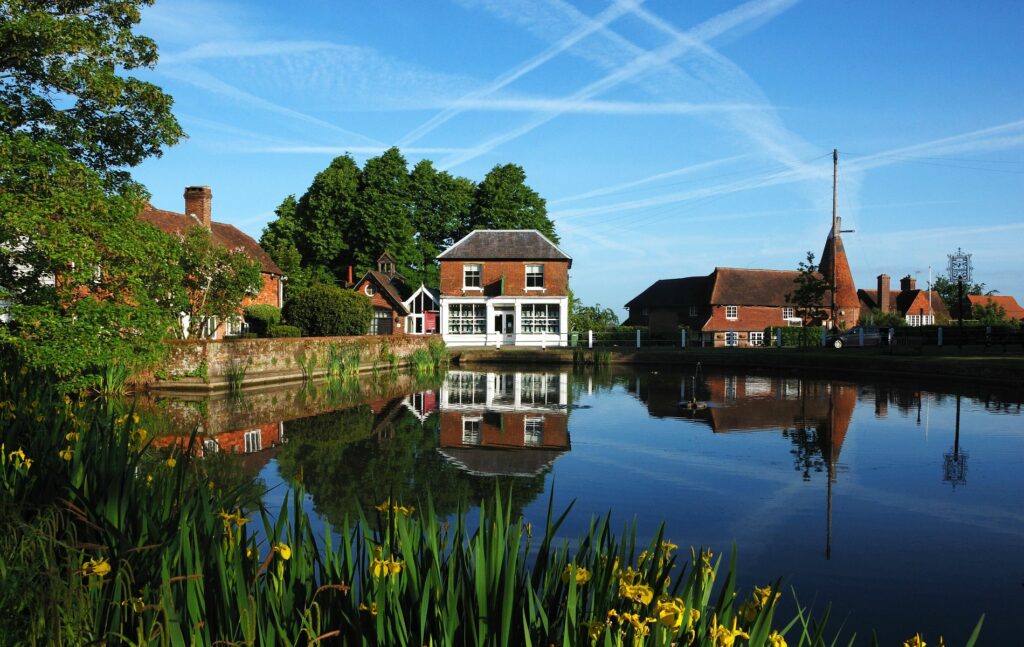
Is Goudhurst a nice place to live?
A timber-framed coaching inn – check. A 12th-century church – check. A village duck pond – check. And iconic Kentish oast houses – check.
There’s little doubt about it, Goudhurst is an almost impossibly pretty village in the Garden of England.
It lies in the Weald, not so far outside the M25 London orbital route, yet harks back to an altogether more relaxed and genteel time – as a glance at the community-oriented village magazine will bear out.
16. Sevenoaks, Kent
Key facts:
- Education: of the eight primary schools in Sevenoaks, both St Thomas’ Catholic Primary School and Lady Boswell’s Church of England Voluntary Aided Primary School are rated “outstanding” by Ofsted.
- Grammar Schools: The Weald of Kent Grammar School, which has its main site in Tonbridge, has been rated “outstanding” by Ofsted and, in 2021, intends to open separate extensions of new grammar schools in Sevenoaks.
- Private Schools: The independent Tonbridge School and Walthamstow Hall are highly rated by the School Guide;
- Transport links: Sevenoaks is situated on an ancient road from London to Hastings on the south coast now called the A21, which bypasses the town. But the town is also at the important crossroads of the A21, London’s circular M25 motorway, and the M26 motorway, which heads across country eastwards to Maidstone and the east coast of Kent. The 28-mile (46 km) drive into central London typically takes under one hour.
- Trains: There are more than 470 trains a day into London – taking an average of 46 minutes to complete the journey.
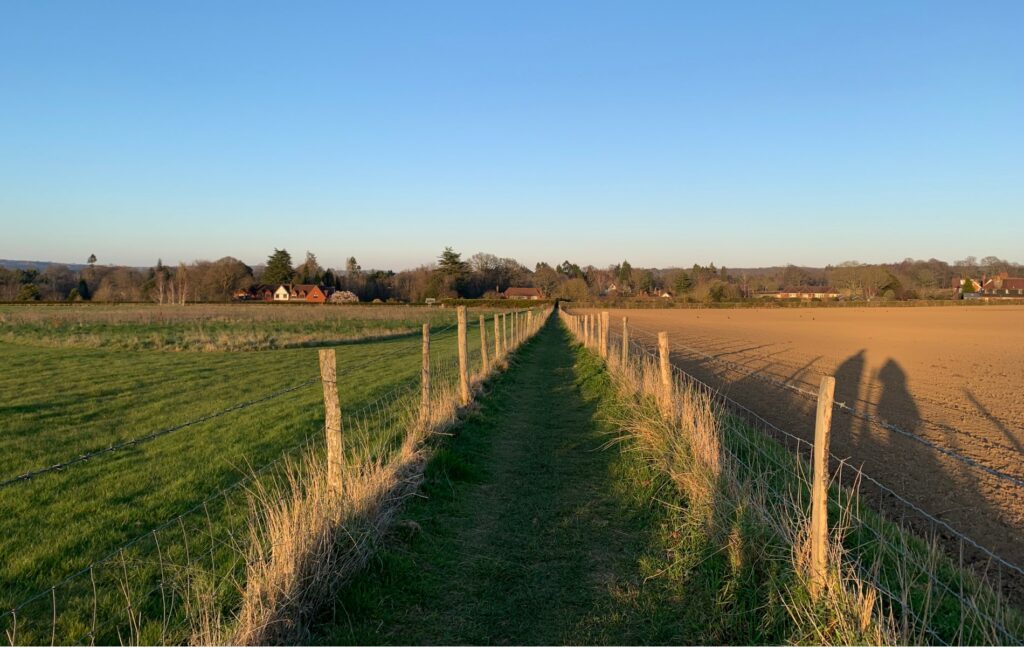
What is it like to live in Sevenoaks?
Sevenoaks was voted by the Times newspaper in 2019 as one of the best places to live in the UK, citing the proximity to London and the fast train connections.
The town is surrounded by open countryside and its local grammar schools are among the best in the country.
17. Winchester, Hampshire
Key facts:
- Education: of the seven primary schools close to Winchester, three are rated outstanding by Ofsted, as is the state secondary, Kings’ School, and the sixth-form college, Peter Symonds College.
- Private schools: Far and away the most famous independent school is the 600-year-old Winchester College, an independent fee-paying boarding school for boys that epitomises the British public school tradition;
- Transport links: Winchester lies in the valley of the River Itchen, at the western end of the South Downs, and between junctions 9 and 10 of the M3 Motorway. The motorway runs the 60 miles (97 km) northeast to London and 14 miles (23 km) southwest to the port of Southampton, the New Forest National Park and the south coast of Hampshire. That puts London approximately one hour and 17 minutes away by car.
- Trains: More than 100 trains a day also ply the mainline route to London Waterloo in an average journey time of one hour and 25 minutes.
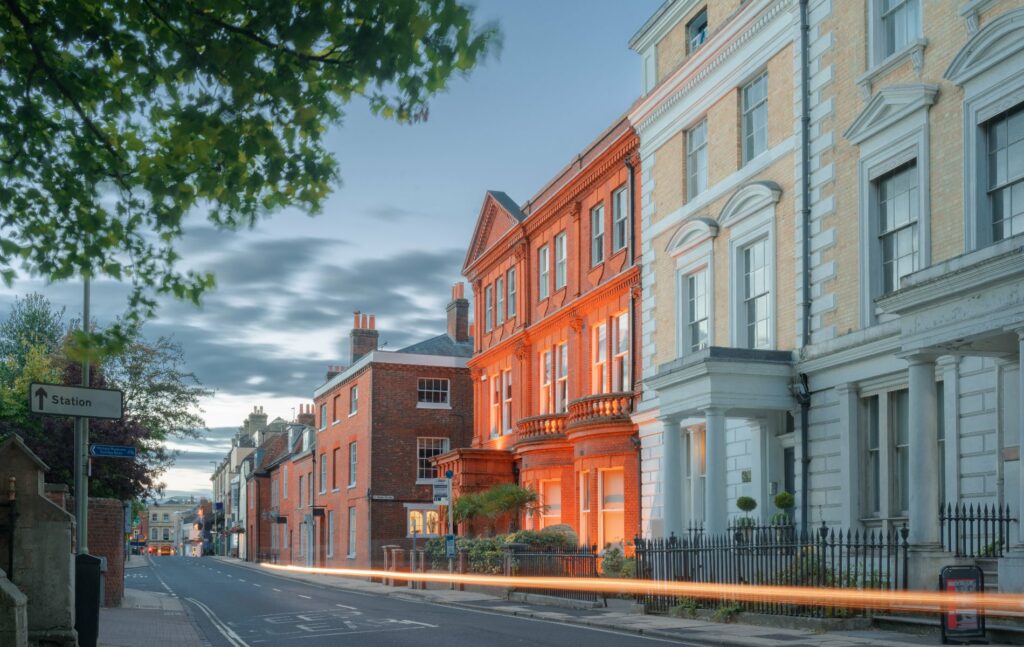
Is Winchester a good place to live?
With many professionals now choosing to work from home for at least a part of the week, acceptable commuting distances have been pushed further and further from the capital itself.
This has attracted those professionals and their families to take up residence in this ancient and attractive city and the county town of Hampshire.
This ancient capital of Wessex is home to the world-famous Winchester Cathedral and the city continues to be surrounded by open countryside and farmland.
18. Crowborough, East Sussex
Key facts:
- Education: the five principal primary schools in Crowborough are all rated “good” by Ofsted. The local state secondary school for pupils from 11 to 18, the Beacon Academy is also rated “good”. Barely 20 miles to the south of Crowborough at Hailsham is the independent co-educational day and boarding school, Bede’s;
- Transport links: the main road through Crowborough is the A26 trunk road which runs between the port of Newhaven on the south coast and Tunbridge Wells to the northeast. Beyond Tunbridge Wells, the main road intersects the main M25 motorway at Sevenoaks. The driving time to central London is a shade over one hour – to cover the 45 miles (72.7 km).
- Trains: On weekdays, there are typically 23 trains a day operating a direct service from Crowborough to London Bridge – a journey of about one hour and 9 minutes. Crowborough is approximately 23 miles (37 km) from Gatwick Airport.
Why live in Crowborough?
Crowborough is an affluent town in the district of Wealden, which stretches from the Weald in the north as far south as the East Sussex coast. It sits on the High Weald Area of Outstanding Natural Beauty.
Although the market town is in an area of natural beauty, it is a firm favourite with families, has a liveliness of its own and fulfils its role as the largest inland town in East Sussex.
19. Eastleigh, Hampshire
Key facts:
- Education: three of the five main primary schools in Eastleigh are rated “outstanding” by Ofsted, as is the large secondary Thornden School. Stroud School in nearby Romsey is highly-regarded non-selective preparatory school (ages 3-13) principally for entrance to the independent King Edward VI School, the leading private school in Southampton.
- Trains: the town of Eastleigh expanded rapidly in the 19th and 20th centuries thanks largely to its extensive railway yards. It remains on the mainline for direct services to London Waterloo – a journey of around one and a half hours.
- Transport: Because Eastleigh is also close to the start of the major M3 motorway, industrial, commercial, and residential development has depended as much on-road Transport links. Travelling exclusively on the M3 motorway, the 71-mile (114 km) drive to London can be completed in an hour and 23 minutes. Airport: Southampton Airport is only 2.5 miles (4 km) from the centre of Eastleigh.
Why live in Eastleigh?
Eastleigh has been ranked as one of the top ten places to live in Britain, thanks mainly to its ideal location.
It offers fast Transport links to London, Southampton, Winchester, Portsmouth, the New Forest National Park, and the sandy beaches towards Bournemouth and the borders with the county of Dorset.
20. Winchelsea, East Sussex
Key facts:
- Education: there are two primary schools in Winchelsea rated “good” by Ofsted. A 20-minute drive away, the Hastings Academy (for 11-16 year-olds) is also rated “good”.
- Private schools: Just a little further away, notable fee-paying independent schools include Battle Abbey School and Buckswood School in Hastings – which describes itself as a “very British school, a very global outlook”;
- Transport links: Winchelsea lies on the main coastal trunk route, the A259, which runs eastwards towards Folkestone and Dover and westwards to Eastbourne and West Sussex. The distance by road to London is 70 miles (113 km) and is likely to take about an hour and a half (depending on traffic).
- Trains: The train journey to London (St Pancras) can take anywhere from just over an hour to two hours and 45 minutes.
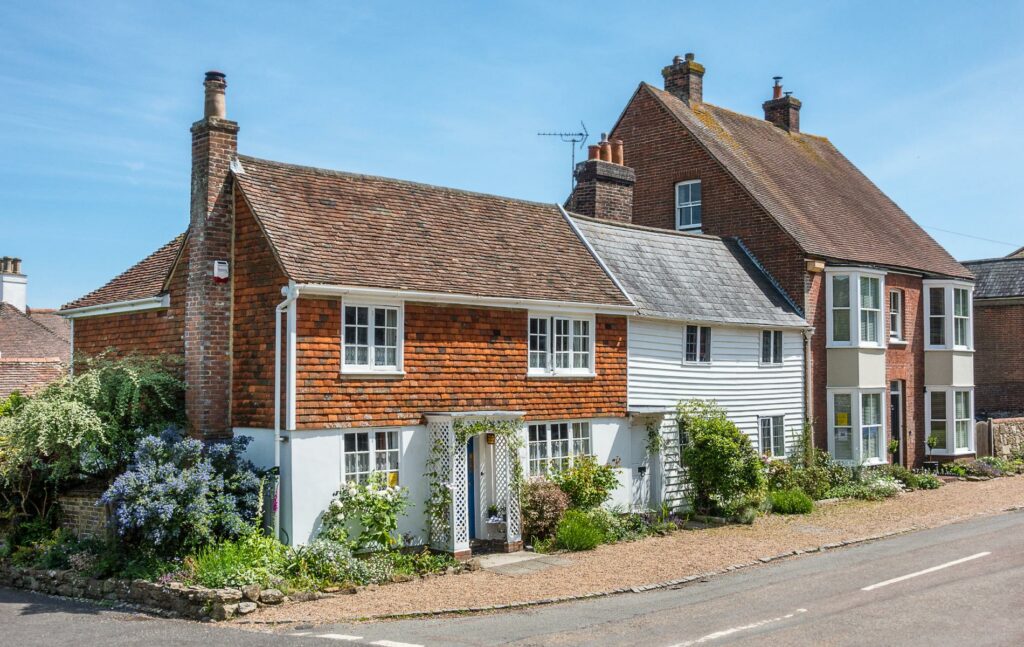
Is Winchelsea a nice place to live?
Winchelsea became an important cross-Channel port soon after the Norman Conquest in 1066, although the old town was destroyed by flooding in 1287. A new town was ordered to be built by Kind Edward I.
Today, it is a picturesque, peaceful – some might say sleepy – community of barely 600 inhabitants who jealously guard their reputation as the “smallest town in England”.
Winchelsea has beautiful shingle beaches facing Rye Bay, the estuary of the River Rother, where you can enjoy bracing coastal walks.
Property Finders in South East England
As property finders, we often assist clients in deciding exactly where it is they would like to live.
Our buying agents expertly navigate the best places to live in the South East region of England in order to find the perfect location for a home.
If you’re planning on moving home and would like to discuss your search further to learn more about our services please contact us for a no obligation discussion.
